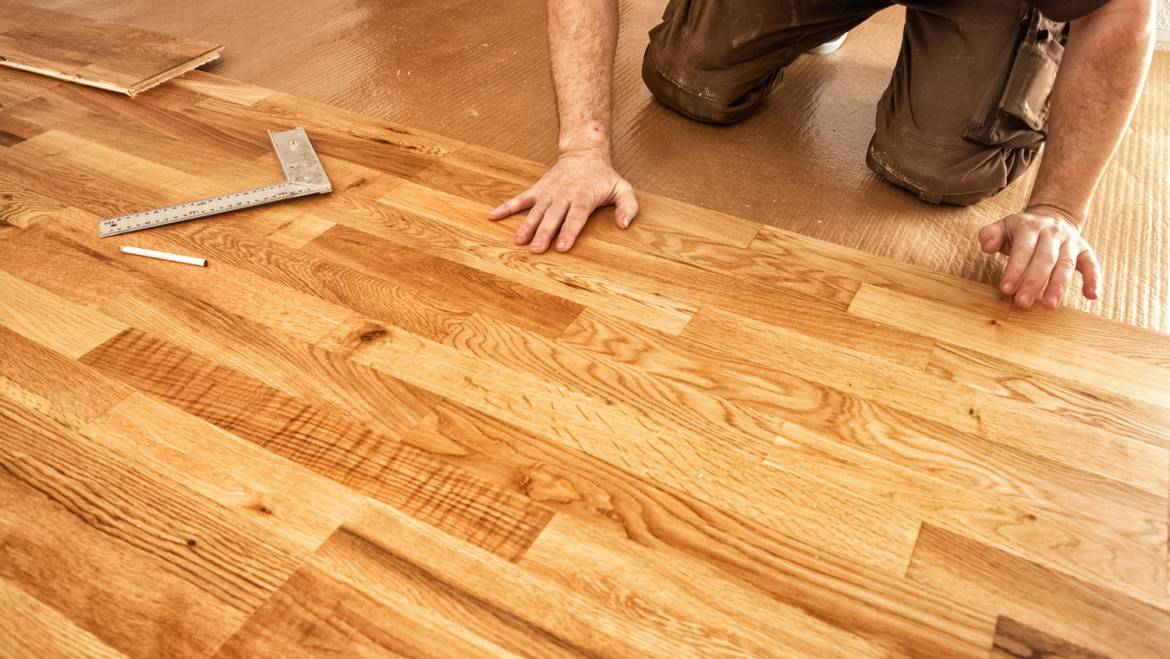Area Rugs Bathroom Vanities Carpet Commercial Hardwood Laminate Natural Stone Tile Vinyl Window Treatments
There are numerous flooring options out there, such as laminate, hardwood, carpet, area rugs, natural stone tile, vinyl, etc, but a wooden floor always wins in terms of charm and warmth. Wood floors are classic and attractive. Some people are concerned about buying wood floor due to the high maintenance and potential wear and tear. In this case, engineered hardwood flooring is a fantastic option. What exactly is engineered wood flooring and will it work well in your space? We have gathered some key elements to consider when deciding whether or not to choose engineered woodfloor as an option.
How do they Make Engineered Hardwood?
Although hardwood flooring comes directly from the tree and into your home, engineered hardwood flooring is a more developed, complex product, made up of many layers. Thinly sliced wood (less than approximately 1/8”) known as veneer is the top layer of engineered hardwood. This comes from whatever species you choose upon ordering. The inner layers of engineered hardwood flooring consist of high-density fiberboard, hardwood, or plywood. The outer veneer provides authenticity and style. It is the core layers that create a stability similar to that of conventional hardwood flooring.
Engineered hardwood flooring Glenview has improved greatly in durability and appearance since its invention in the 60s. Currently there are dozens of wood species to choose from as well as surface effects that help it to blend into any home of any style, whether it be antique, retro, modern, or contemporary. Contact our hardwood floor contractors to find out more about the difference between solid and engineered hardwood.
Where Engineered Wood Flooring be Installed?
It is perfect for high traffic areas, such as hallways and living rooms. Some engineered floors can even be safely used in spaces where solid hardwood is not recommended, like bathrooms and basements which have higher than normal moisture levels.
What are the Available Types of Engineered Hardwood Types?
It is crucial to consider available surfaces, thickness, and finished when selecting engineered hardwood, in order to ensure the best option for your home. There are varieties of engineered hardwood that meet any home’s aesthetic and theme.
Finishes
There are a variety of textures and finishes available in today’s market. The brushed finish best displays the wood grain while the distressed finish provides more of a vintage look.
Surface
There are also a variety of surface treatments available. For example, although oily surfaces bring out the grain of the wood, they require more maintenance than a lacquer finish. Lacquer finishes are more protective and are available either matte or satin. The matte lacquer provides a natural finish while the satin lacquer greatly increases wood’s durability.
Thickness
The range of thickness of engineered wood runs anywhere from 3/8” – ¾”. When thinner veneers are chosen, you lose the possibility to refinish the floors later on. In this case, the lifetime of a floor may be between 20-30 years. Thicker flooring will last longer and the top layer should be able to be refinished 2-3 times in the floor’s lifetime, engineered hardwood floor refinishing could extend the lifetime to 40-80 years. Both options provide long lasting solutions.
Be sure to apply your acquired engineered hardwood knowledge by checking out the options and choosing the best one for your home!










